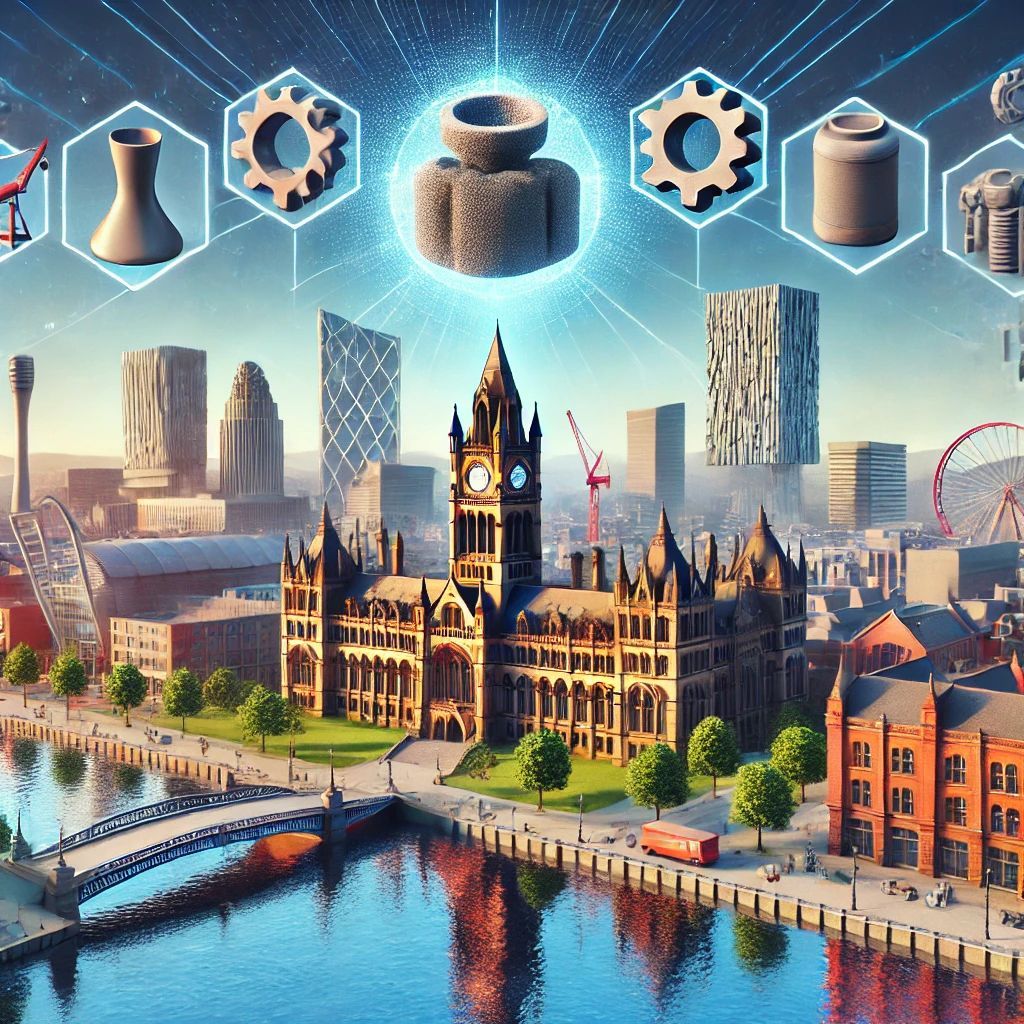Scaling up 3D printing for mass production
What are the challenges of scaling up 3D printing for mass production?

From rapid prototyping to customized production, 3D printing offers a myriad of benefits.
However, when it comes to scaling up 3D printing for mass production, several challenges arise. In this article, we will delve into the obstacles faced in scaling up 3D printing and explore the future of this technology in mass manufacturing.
Furthermore, we will discuss the 3D printing service prices in the UK, giving an overview of the market trends and options available.
Complex and Time-Consuming Processes:
One of the major challenges of scaling up 3D printing for mass production is the complex and time-consuming nature of the process.
While 3D printing excels at creating intricate designs and one-off prototypes, transitioning to large-scale production requires careful planning and optimization.
Printing a single item may take several hours, and when multiplied by the number of units needed, it can significantly slow down the production timeline.
Cost and Efficiency:
Another obstacle faced in scaling up 3D printing is the cost and efficiency factor. While 3D printing can be cost-effective for small-scale productions, mass production requires a significant investment in equipment, materials, and maintenance.
The costs associated with scaling up can be prohibitive for many businesses, making it challenging to justify the switch from traditional manufacturing methods.
Material Limitations:
Material limitations also pose a challenge in scaling up 3D printing.
While there is a wide range of materials available for 3D printing, not all of them are suitable for mass production. Materials with specific properties, such as strength, durability, and heat resistance, may be limited or more expensive in the 3D printing market.
This limitation can restrict the types of products that can be efficiently manufactured using this technology.
Quality Control and Consistency:
Maintaining consistent quality control is another hurdle when scaling up 3D printing for mass production. With traditional manufacturing processes, quality control measures are well-established and implemented at various stages of production.
However, in 3D printing, ensuring consistent quality and meeting stringent industry standards across a large number of products can be challenging.
Variations in print quality, dimensional accuracy, and surface finish need to be carefully monitored and controlled.
Production Speed:
3D printing is known for its slow production speeds compared to traditional manufacturing techniques. As the complexity and size of the objects increase, the printing time becomes more substantial.
While advancements in technology have led to faster printing speeds, achieving the required production output for mass manufacturing remains a challenge.
Enhancements in speed without compromising quality will be crucial in overcoming this obstacle.
The Future of 3D Printing in Mass Production:
Despite the challenges, the future of 3D printing in mass production looks promising. Researchers and industry leaders are actively working to address the limitations and find innovative solutions.
Here are a few developments that indicate the potential for scaling up 3D printing:
1. Advancements in Materials:
As the demand for mass production using 3D printing increases, so does the need for a broader range of materials.
Manufacturers are investing in the research and development of materials specifically tailored for 3D printing, such as high-performance polymers, metal alloys, and composite materials.
These advancements will expand the possibilities for mass-produced 3D-printed products.
2.Hybrid Manufacturing:
Hybrid manufacturing, a combination of 3D printing and traditional manufacturing techniques, offers a solution to the limitations of scaling up.
By integrating 3D printing with processes like CNC machining, injection molding, or casting, manufacturers can leverage the benefits of both technologies.
This approach allows for the production of complex components with intricate designs while maintaining high volumes and cost-efficiency.
3.Automation and Robotics:
Automation and robotics play a crucial role in scaling up 3D printing for mass production. Robotic systems can handle repetitive tasks, such as removing support structures or post-processing, reducing the need for manual labor.
By automating certain stages of the production process, manufacturers can increase efficiency, reduce costs, and improve overall productivity.
As 3D printing continues to evolve and overcome the challenges of scaling up for mass production, it presents an exciting opportunity for businesses.
If you're considering leveraging 3D printing services in the UK, it's essential to explore reliable providers that offer competitive pricing and high-quality results.
Conduct thorough research, compare prices, and assess the capabilities of different 3D printing services before making a decision. Embracing this technology could give your business a competitive edge, allowing you to create innovative products and optimize your manufacturing processes.
Conclusion:
Scaling up 3D printing for mass production comes with its fair share of challenges, including complex processes, cost considerations, material limitations, quality control, and production speed.
However, ongoing advancements in technology, materials, and process integration offer hope for overcoming these obstacles.
As businesses explore the potential of 3D printing, it is crucial to understand the market trends and available options, such as 3D printing services in the UK.
By embracing this technology and staying informed about the latest developments, manufacturers can position themselves for success in the evolving landscape of mass production.












